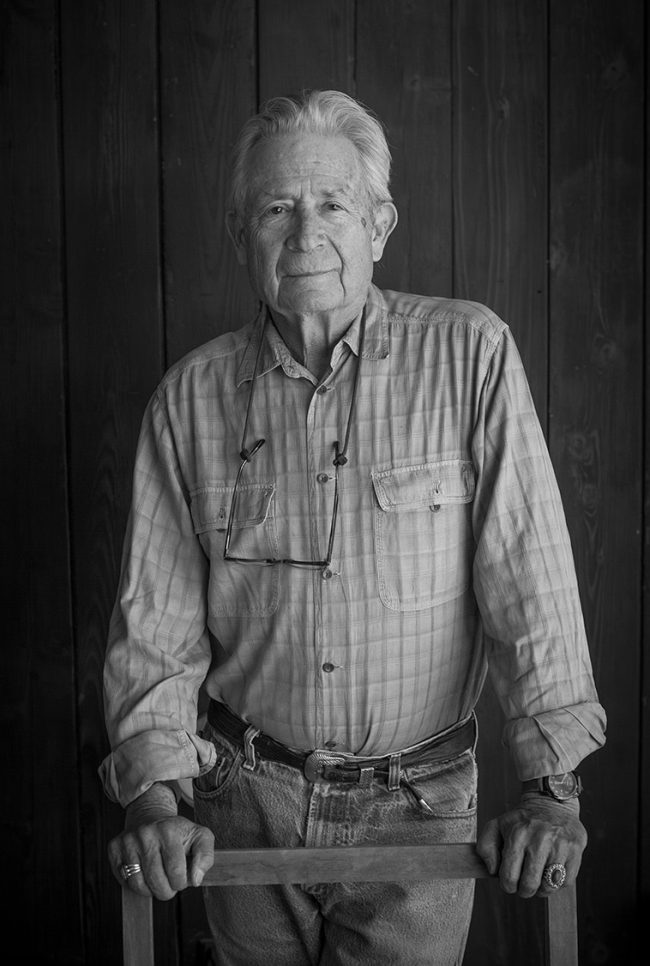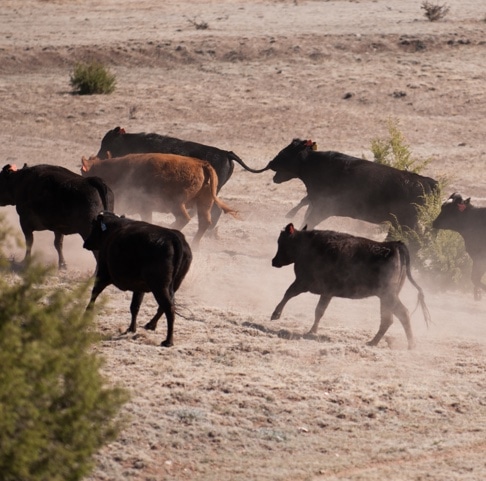Most of the cattle were influenced by British and Continental breeds for a few generations nearly 100 years ago. Brown Swiss, Shorthorn, Devon, Simmental, Ayrshire, Korean, Holstein and Angus had been imported by 1887 and impacted today’s Wagyu. Crossbreeding was prominent for several years, but when the price of crossbreds collapsed in 1910 no further crossbreeding was conducted. The result was selection for specific traits determined by region and extensive linebreeding was used to achieve those traits. The main sire lines exported from Japan in the 1990s were Tajima (or Tajiri), Fujiyoshi (or Shimane) and Kedaka (or Tottori).
Tajima sires are known for fine marbling, excellent beef quality, a smaller frame size, and a somewhat lower rate of growth. They were originally chosen and bred for their heavy forequarters because their primary use was to pull carts. Tajima sires from the Hyogo Prefecture produce the only genuine Kobe Beef. Fukutsuru 068, Michifuku, Sanjirou, and Kitateruyasudoi J2810 (ETJ 003) are some of the elite marbling Tajima sires that provide the base of the Lone Mountain Wagyu herd.
Fujiyoshi sires produce well-balanced cattle that present larger frame size, good growth, and strong mothering abilities, though with somewhat coarser marbling. Dai 7 Itozakura J65 is the most famous sire in this line, and his descendants – TF Itohana 2, Kitaguni Jr. and Itoshigefuji TF147, to name a few — are now used in the Lone Mountain breeding program.
Kedaka lines from the Tottori District descend from the sire Kedaka J7212. They exhibit good growth and larger frames, and are known for their fine, loose skin. Tottori cattle, because they were used as pack animals for the grain industry of the Tottori region, were selected for their size and strength of topline.
The most influential Kedaka sire is Dai 20 Hirashige J287, whose semen is still used in Japan, though it is extremely rare and very expensive. His son, Hirashigetayasu (ETJ 001) J2351, is being used at Lone Mountain; another son, Hirashigekatsu, is currently one of the most popular sires in Japan.
The well-known Japanese breeder; Shogo Takeda san, used Modoshi Kohai – the classic Japanese “rotation breeding” plan: mating a highmarbling female to a sire known for size or frame, and then back-crossing to a marbling sire, producing a large animal of good marbling, milk production, and calf- raising potential. Lone Mountain wholeheartedly embraces this Wagyu breeding philosophy.
We started our Fullblood Wagyu herd with selected Tajima bloodlines and are now outcrossing to both the Dai 7 Itozakura and Dai 20 Hirashige lines in order to add size and frame, with the intention of back-crossing those females to high-marbling sires.
In order to fully underscore the quality of these pedigrees, we have included the following progeny metrics: BMS (Beef Marbling Standard), ADG (Average Daily Gain, in lbs.), YG (Yield Grade, a percentage score), and REA (Ribeye Area, in cm2). It should be noted that the BMS scores here are derived from part two of the Japanese progeny test, which yields a lower BMS score for two reasons: first, it is scored on a scale of 1 to 5 (not 1 to 12), and second, the progeny was butchered at a young age, before the natural marbling process could run its full course. These BMS scores are therefore lower than would occur for finished feeders.


